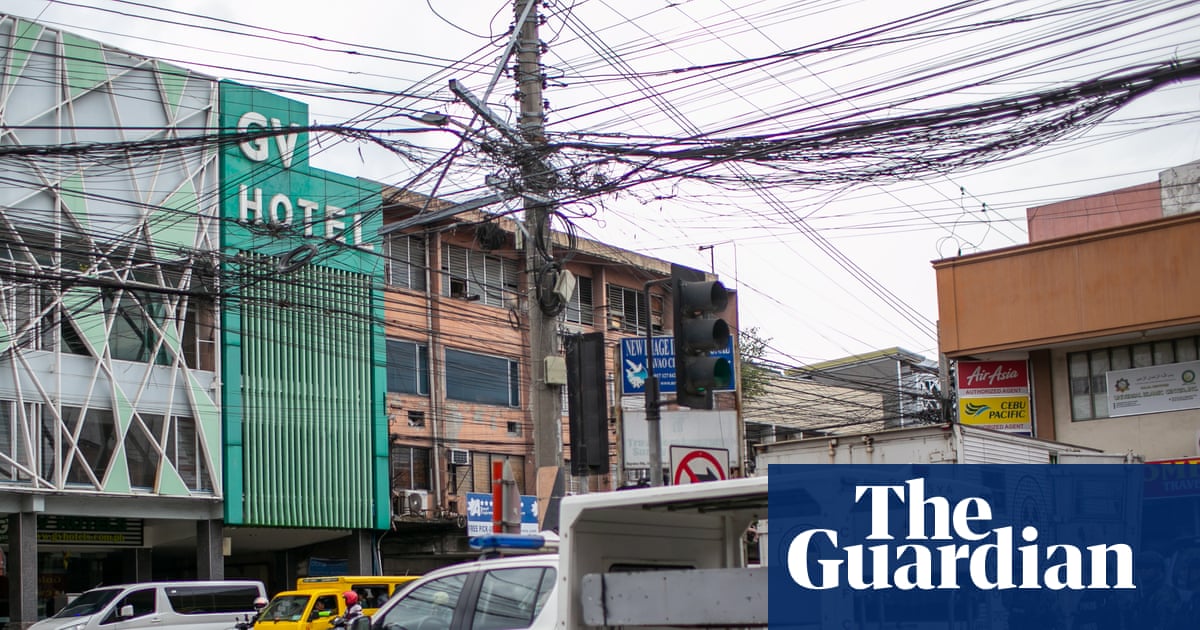Last Updated:November 27, 2025, 08:48 IST
At least 44 people are dead in Hong Kong’s worst fire in six decades, with the cause of the blaze yet to be established

The Wang Fuk Court blaze is thought to be the deadliest fire in Hong Kong since the Second World War.(AFP photo)
Hong Kong’s worst fire in more than 60 years has triggered a wide-ranging investigation into how a blaze at Wang Fuk Court in Tai Po spread so fast across multiple residential towers. At least 44 people have died, more than 270 have been reported missing, and thousands of residents are in evacuation shelters after flames raced up and around the 31-storey blocks, which were under renovation and wrapped in bamboo scaffolding and construction mesh.
The Wang Fuk Court blaze is thought to be the deadliest fire in Hong Kong since the Second World War. Previously, the 1996 Garley Building fire, which killed 41 people, was widely described as the city’s worst peacetime fire. The scale of the latest incident has now forced a closer look at how the estate’s renovation setup and external materials may have intensified the disaster.
Wang Fuk Court is a public housing complex built in 1983. It consists of eight tower blocks, each 31 storeys high, with 1,984 flats and about 4,600 residents. Seven of these towers were affected by the blaze, according to Tai Po district councillor Mui Siu-fung, who spoke to BBC Chinese. The entire complex was undergoing refurbishment when the fire broke out, and the exterior was enclosed in bamboo scaffolding and green construction netting from ground level to the rooftops.
What May Have Exacerbated The Blaze?
The exact cause of the fire is still unknown, but Hong Kong’s Security Secretary said a preliminary investigation had found the speed of the fire’s spread to be unusual.
One of the factors identified early on was the presence of polystyrene around windows, which can be highly flammable. Director of Fire Services Andy Yeung said that his crews discovered polystyrene boards blocking windows in multiple apartments. He said: “These polystyrene boards are extremely inflammable and the fire spread very rapidly."
He described the discovery as out of the ordinary, saying: “Their presence was unusual so we have referred the incident to the police for further enquiries."
Alongside the polystyrene, external coverings used during the renovation are being examined. CNN reported that Hong Kong’s housing authorities would be looking into whether the protective layers placed over the residential blocks during refurbishment were sufficiently fireproof.
“Buildings Departments’ independent review unit will investigate whether the building’s exterior walls meet the fire retardant standard," Hong Kong’s leader John Lee told a press conference. “If there’s any wrongdoing, we’ll pursue accountability in accordance with laws and regulations."
There are also questions over whether the mesh and other materials attached to the scaffolding at Wang Fuk Court met recognised fire-retardant standards. Hong Kong’s Labour Department Code of Practice for bamboo scaffolding safety says that protective nets, screens and tarpaulin or plastic sheeting installed on scaffolding “should have appropriate fire retardant properties in compliance with a recognised standard."
After the blaze, John Lee said the government would launch special checks on ongoing projects to see whether scaffolding mesh materials meet fire-retardant and other safety requirements.
Bamboo Scaffolding And Mesh Under Scrutiny
When the fire broke out, the towers at Wang Fuk Court were fully encased in bamboo scaffolding covered with green construction netting. Footage showed flames racing up this exterior layer, igniting the netting and sending burning poles and lattice sections falling to the ground.

Bamboo scaffolding is a construction system built by tying long bamboo poles together with cords to form a framework around a building. It has been used in Hong Kong for generations and traces its roots to construction traditions in mainland China, where bamboo was widely relied upon as a building material and has even appeared in Han dynasty scroll paintings.
In Hong Kong today, trained scaffolders still climb high-rise towers and assemble these lattices by hand, enclosing buildings using bamboo poles bound with nylon ties.
The material remains central to both new construction and the renovation of older tenements, and continues to be widely used partly because bamboo is lighter, cheaper and more flexible than metal. At the same time, bamboo is combustible and can deteriorate in Hong Kong’s humid climate. BBC quoted Development Bureau spokesperson Terence Lam as saying that bamboo scaffolds have “intrinsic weaknesses such as variation in mechanical properties, deterioration over time and high combustibility, etc, giving rise to safety concerns."
Government policy has moved gradually toward metal alternatives. In March, authorities said that 50 per cent of new public construction works would be required to use metal scaffolding instead of bamboo, with metal described as fire resistant and better suited to the climate. Despite this shift, Hong Kong’s secretary for labour Chris Sun said in July that “the government has no intention to ban the use of bamboo scaffolds at the moment."
Recent incidents have intensified concerns. In October, a massive bamboo scaffolding caught fire at Chinachem Tower in the Central business district, burning through construction netting, leaving windows and external walls badly damaged.
The Association for the Rights of Industrial Accident Victims in Hong Kong said in a Facebook post that there had been at least two other fires involving bamboo scaffolding this year.
Where And When Did The Fire Start?
The blaze broke out at Wang Fuk Court at 14:51 local time on Wednesday. The estate is a large housing complex in Tai Po, a residential district in the northern part of Hong Kong near the city of Shenzhen on the Chinese mainland.
Wang Fuk Court is made up of eight 31-storey tower blocks providing 1,984 apartments. About 4,600 people live there, according to government census data from 2021.
What We Know About The Arrests
Police have arrested three men on suspicion of manslaughter in connection with the Wang Fuk Court fire. The men are aged between 52 and 68, and two of them are directors of a construction firm, while the third is an engineering consultant.
According to the BBC, authorities discovered mesh and protective material on the outside of the buildings that did not appear to be fireproof. Styrofoam was also spotted covering window areas. Investigators are now examining the role of the company responsible for parts of the refurbishment and whether there were failures that contributed to how the blaze spread.
A police spokesperson said: “We have reason to believe that those in charge at the company were grossly negligent, which led to this accident and caused the fire to spread uncontrollably, resulting in major casualties."
Engineer and whistle-blower Jason Poon has said he previously raised concerns with several departments about a lack of fire retardant in scaffolding nets at another housing complex, but that his warnings were ignored.

Karishma Jain, Chief Sub Editor at News18.com, writes and edits opinion pieces on a variety of subjects, including Indian politics and policy, culture and the arts, technology and social change. Follow her @kar...Read More
Karishma Jain, Chief Sub Editor at News18.com, writes and edits opinion pieces on a variety of subjects, including Indian politics and policy, culture and the arts, technology and social change. Follow her @kar...
Read More
First Published:
November 27, 2025, 08:48 IST
News world Hong Kong Fire: What Drove The Rapid Spread Of The City’s Worst Blaze In Decades?
Disclaimer: Comments reflect users’ views, not News18’s. Please keep discussions respectful and constructive. Abusive, defamatory, or illegal comments will be removed. News18 may disable any comment at its discretion. By posting, you agree to our Terms of Use and Privacy Policy.
Read More

 2 weeks ago
2 weeks ago















